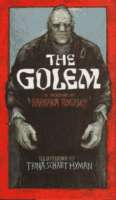
A saintly rabbi miraculously brings to life a clay giant who helps him watch over the Jews of sixteenth-century Prague.
Catalog sorted by age group

A saintly rabbi miraculously brings to life a clay giant who helps him watch over the Jews of sixteenth-century Prague.
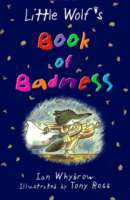
Little Wolf has been brushing his teeth without being growled at, he’s been going to bed early, and he’s been far too nice to his baby brother, Smellybreff! His parents are so worried that they will never make a beast out of him that they send him off to Cunning College, where his Uncle Bigbad instructs timid cubs in the rules of badness. With each letter home to his parents, Little Wolf reveals a new adventure or lesson that he’s learned on his way to Cunning College. Once there, Little Wolf is in for a few surprises!
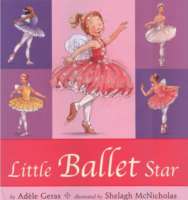
Tilly is just like a real ballerina. The only thing that could make her day even more thrilling? The chance to shine on stage! This charming story captures the delight and anticipation of attending an actual ballet, and makes a perfect gift for every aspiring ballerina.
Readers are invited to join Tilly for her special birthday treat as she discovers the bustle and excitement behind the scenes at a real ballet performance. From backstage warm-ups, to a trip to the dressing room, to an unexpected wardrobe change—

This novel in verse follows the school year of Australian students in classroom 6C, as their unconventional teacher encourages them to discover their own strengths and talents and perform in a memorable concert.
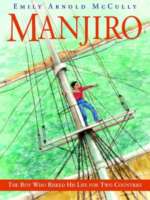
In 1841, Japan had been closed to the outside world for 250 years, and anyone who tried to return to the country after leaving it could be executed. So when the small fishing boat on which 14-year-old Manjiro was working was shipwrecked, he despaired of ever returning to his village. The captain of the American whaling ship that rescued Manjiro took a special interest in him, inviting him to come live in Massachusetts. There, Manjiro was treated like Captain Whitfield’s son, and he began to feel as though Massachusetts was his second home. Still, he never gave up his dream of finding a way to return to Japan and see his mother again. Watercolor illustrations bring to life the true story of a determined and resourceful young man whose intimate knowledge of two cultures later led him to play an important role in the opening of Japan to Western trade and ideas.
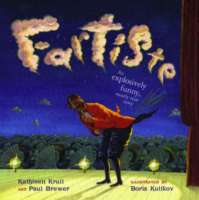
Across the world there are many an artist – But none so outrageous as Joe, the Fartiste.The Fartiste doesn’t sing, he doesn’t dance, and he doesn’t act. But that doesn’t stop him from taking the stage at Paris’s famed Moulin Rouge, where he performs his much-loved act for celebrities and royalty with the funniest talent of all. Joe is the man who has perfected the art of the fart.
Kathleen Krull and Paul Brewer bring new wind to their mostly true story about “the man who made his pants dance,” which is perfectly matched with Boris Kulikov’s explosive art.
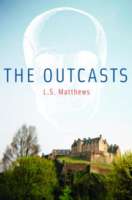
A much-anticipated school trip to England’s West Country turns into a life-changing adventure for five high school misfits when they fall into another dimension while exploring the house in which they are staying.
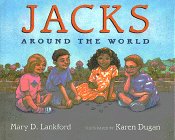
This lively collection contains ingriguing, fast-moving games of jacks from countries as varied as Zimbabwe, Israel, Singapore, and the United States. The introduction to each of the 13 countries is packed with interesting facts, while easy-to-follow rules invite readers to play Cinco Marias (Brazil), Maakgep (Thailand), and other fun-filled games.
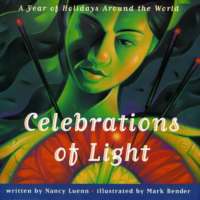
Long ago, people found a way to light the darkness. They built fires to keep warm and cook their food. They lit torches to drive away danger. To help them see at night, they learned to make candles and lanterns. Light was so important in their lives that they came to use it in worship and in celebrations. From a Brazilian New Year’s celebration to the African-American holiday of Kwanzaa, Celebrations of Light circles the year and the globe. The text and paintings highlight twelve festivals, showing the diverse ways in which people around the world use light as a major part of their celebrations. In each of these holidays, light plays a significant role, marking and brightening special days.

Jessye has each foot in two very different worlds: her grandmother Nana’s rural village, rooted in Maori tradition, and her irresponsible mom’s city existence. Although she loves Nana fiercely, Jessye misses her flighty mom and decides to give living with her one more chance.